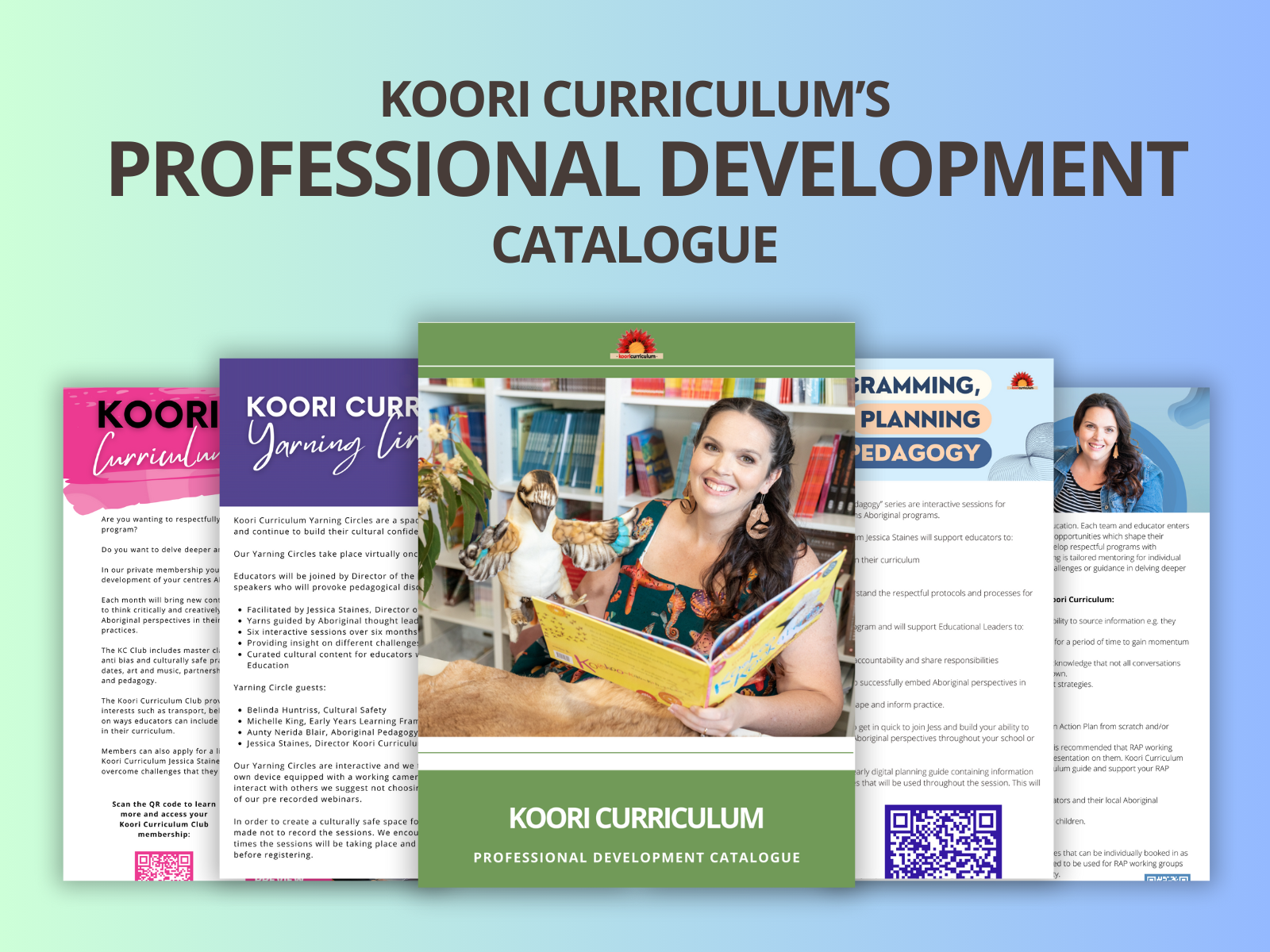
The dark side of well intentioned Aboriginal ‘art’

In recent years with the rise of social media as the inspiration for ‘art’ in early childhood, some of this sophistication has been clouded by quick and easy crafty ideas that are not informed by early childhood practice or research. These may have a place somewhere in life, but it’s worth questioning the educational value of them and if they have a place in early childhood curriculum. This is especially the case when we think about the ways we engage with Aboriginal and Torres Strait Islander art.
While many educators are very well intentioned, often the kind of ‘art’ that is created on significant days, weeks and events connected with Aboriginal and Torres Strait communities tends to draw solely on flags and associative colours (particularly in food and construction materials). The upside of these experiences is that children are learning about how flags and their associative colours are connected with Aboriginal and Torres Strait Islander cultures, but the complexity of expressing cultural alliance or addressing racism often falls away (Scarlet, 2018; Scarlet, 2020).
The myth that non-Indigenous people can ‘do Aboriginal art’ is one that assumes a knowledge and ownership of a culture that is not our own. Once again with good intentions early childhood educators may refer to these experiences as ‘doing Aboriginal art’ - thinking the best of our colleagues – it may be a turn of phrase that comes easily, but the message that is communicated to children, families and each other is not accurate.
The Anti-Bias Approach in Early Childhood (Scarlet, 2020) guides us to consider such pedagogical choices by asking us to deeply reflect on our relationships with diverse cultures in order to see ourselves as part of a cultural mix. In particular, my perspective always begins with what it means to be non-Indigenous in Australia and how that helps or hinders the ‘good intentions’ I have in engaging with Aboriginal art and artists and essentially how racism might be perpetuated (consciously or subconsciously) through the art experiences I provide for children and the language I use to refer to those experiences.
Here are my three favourite Aboriginal and Torres Strait Islander artists that I follow and learn from:
Garry Purchase
https://www.facebook.com/DreamOnAboriginalArts
Dr Bronwyn Bancroft
https://www.facebook.com/Bronwyn-Bancroft-220099841356001
Dr Sarah Jane Moore
https://www.riverbusiness.com.au/
There are a swathe of incredible Aboriginal and Torres Strait Islander artists who are connected with early childhood education and the education sector more broadly – a few of whom you will meet at this years Aboriginal Art Summit:
https://aboriginalecc.com/pages/aboriginal-art-summit
References:
Scarlet, R. R, (Cr.) (2018). Becoming With Art in Early Childhood. Erskineville: MultiVerse Publishing.
Scarlet, R. R, (Ed.) (2020). The anti-bias approach in early childhood 4th Edition. Erskineville: MultiVerse Publishing.



